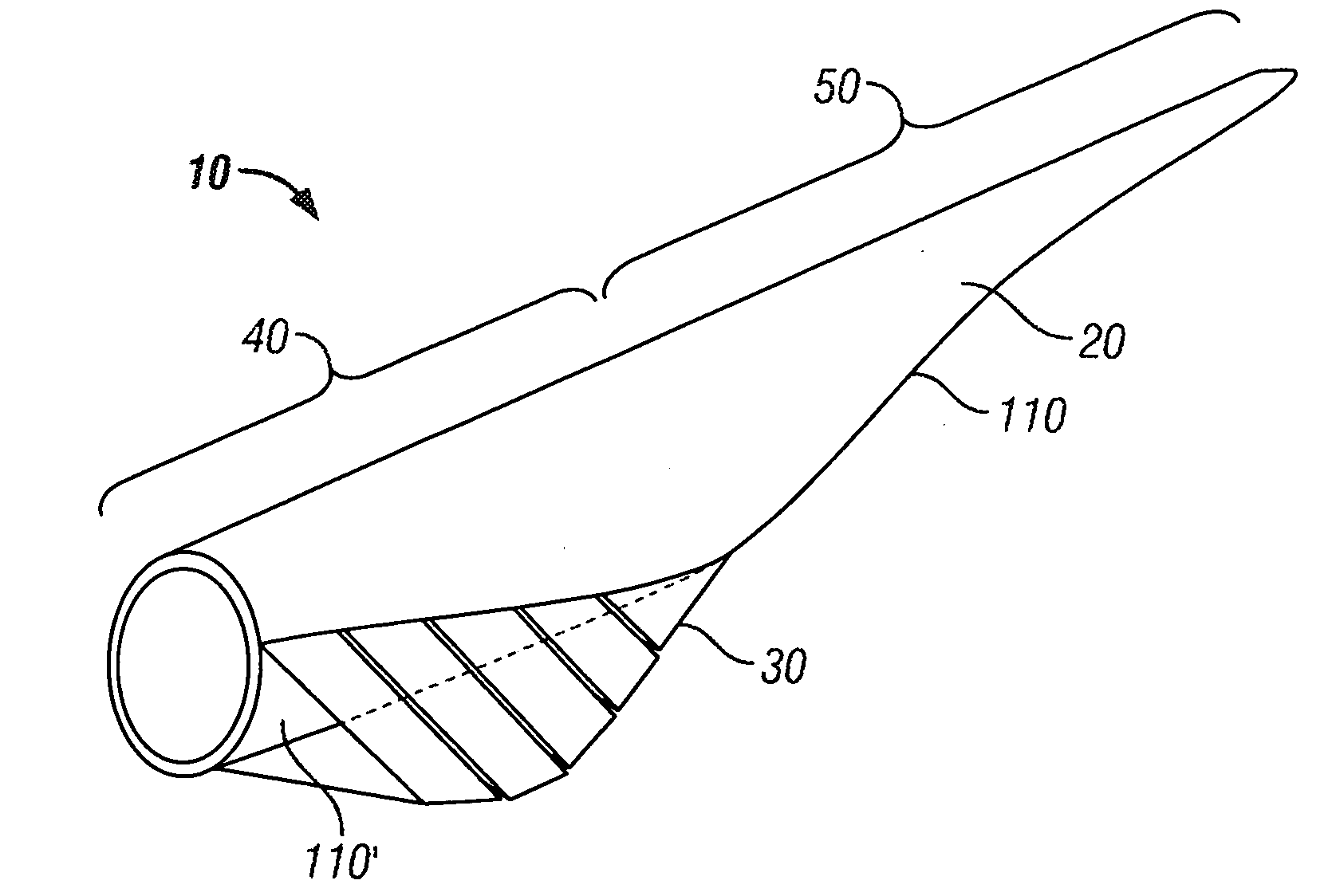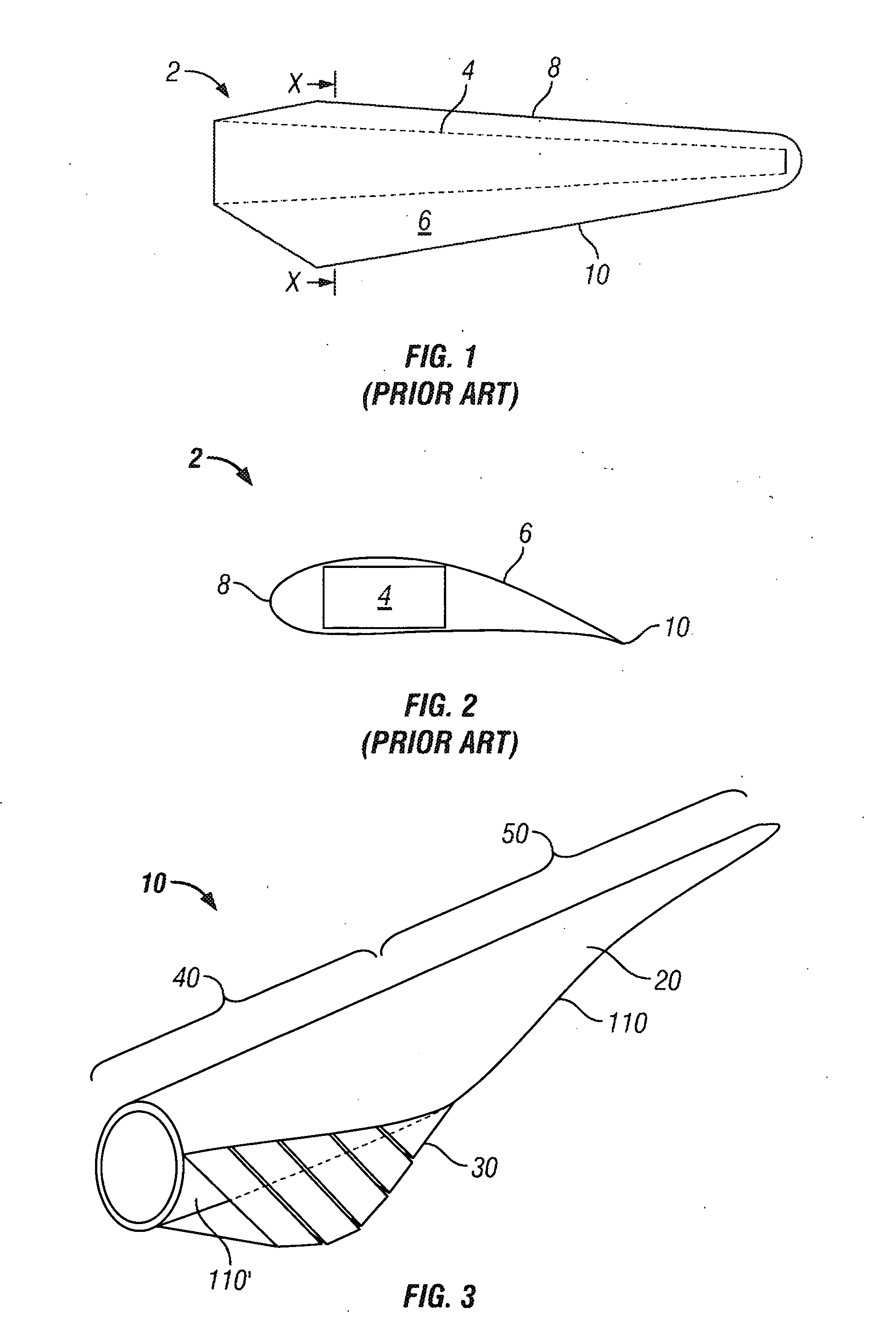Segmented Rotor Blade Extension Portion
a rotor blade and segment technology, applied in the field of rotor blades, can solve the problems of rotor blades that experience significant structural loading in operation, the dimension of the blade, structural problems, etc., and achieve the effect of increasing the local chord length and reducing the weigh
- Summary
- Abstract
- Description
- Claims
- Application Information
AI Technical Summary
Benefits of technology
Problems solved by technology
Method used
Image
Examples
Embodiment Construction
[0056]FIG. 3 illustrates a rotor blade 10 comprising a blade portion 20 and an extension portion 30. A proximal or “root” end 40 of the blade portion 20 is configured to be connected to a rotor hub of a wind turbine installation (not shown), while the distal end 50 of the blade portion 20 extends from the root end 40, and is supported thereby. This distal end 50 represents a “tip” of the blade 10. The length of a rotor blade 10 may be in the range of 20 to 150 metres in length but is typically in the range of 20 to 70 m. An extension portion 30 is appended to a rearmost region of the root end 40. In the illustrated embodiment the extension portion 30 is appended at extreme proximal location, adjacent to where the rotor blade is connected to the rotor hub in use, however the extension portion 30 may be spaced from this extreme proximal location towards the tip of the blade.
[0057]A schematic representing a cross section of the root end 40 of the rotor blade 10 is shown in FIG. 4. An u...
PUM
 Login to View More
Login to View More Abstract
Description
Claims
Application Information
 Login to View More
Login to View More - R&D
- Intellectual Property
- Life Sciences
- Materials
- Tech Scout
- Unparalleled Data Quality
- Higher Quality Content
- 60% Fewer Hallucinations
Browse by: Latest US Patents, China's latest patents, Technical Efficacy Thesaurus, Application Domain, Technology Topic, Popular Technical Reports.
© 2025 PatSnap. All rights reserved.Legal|Privacy policy|Modern Slavery Act Transparency Statement|Sitemap|About US| Contact US: help@patsnap.com



